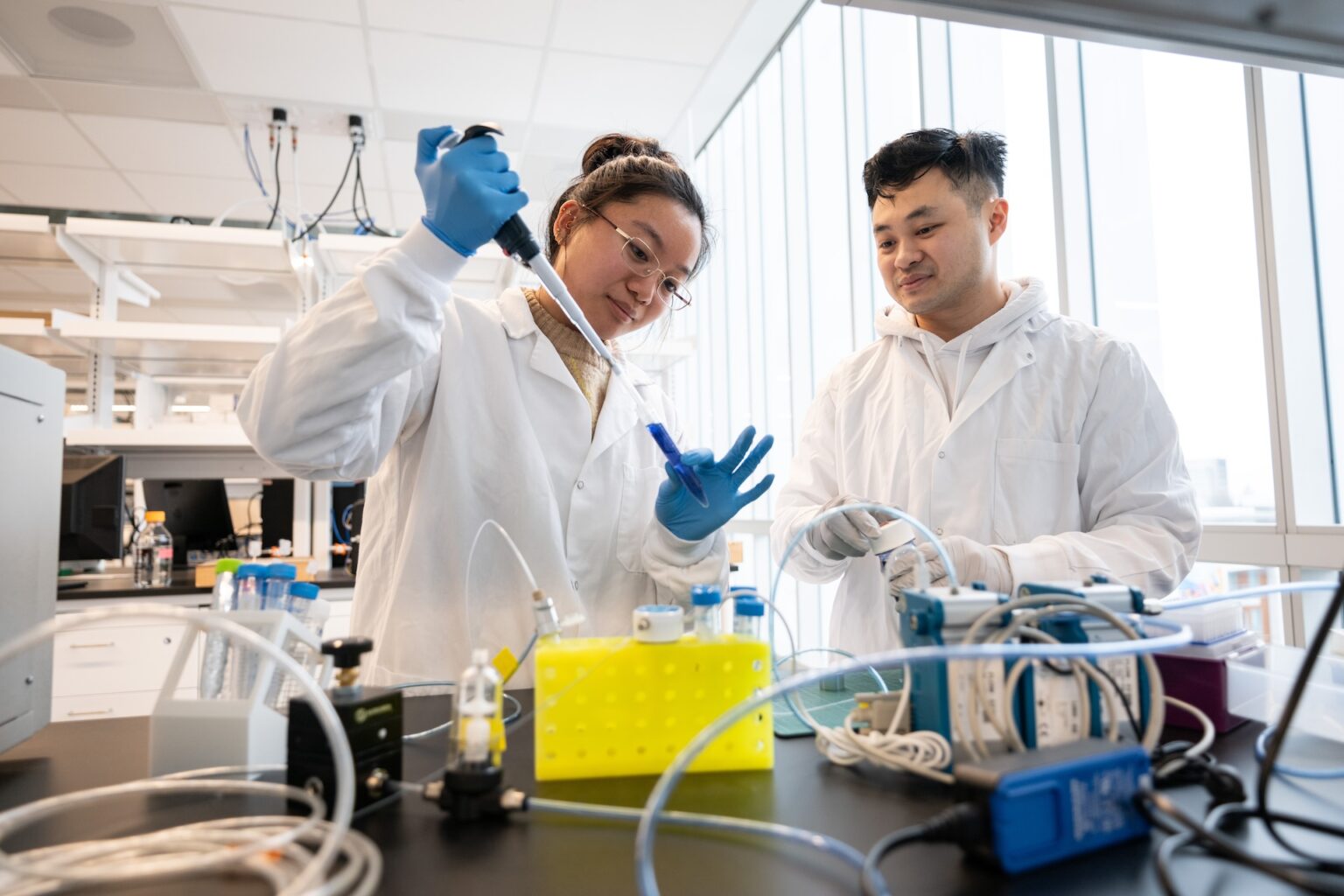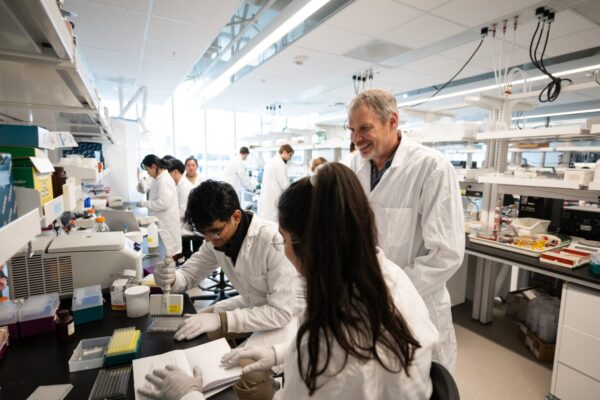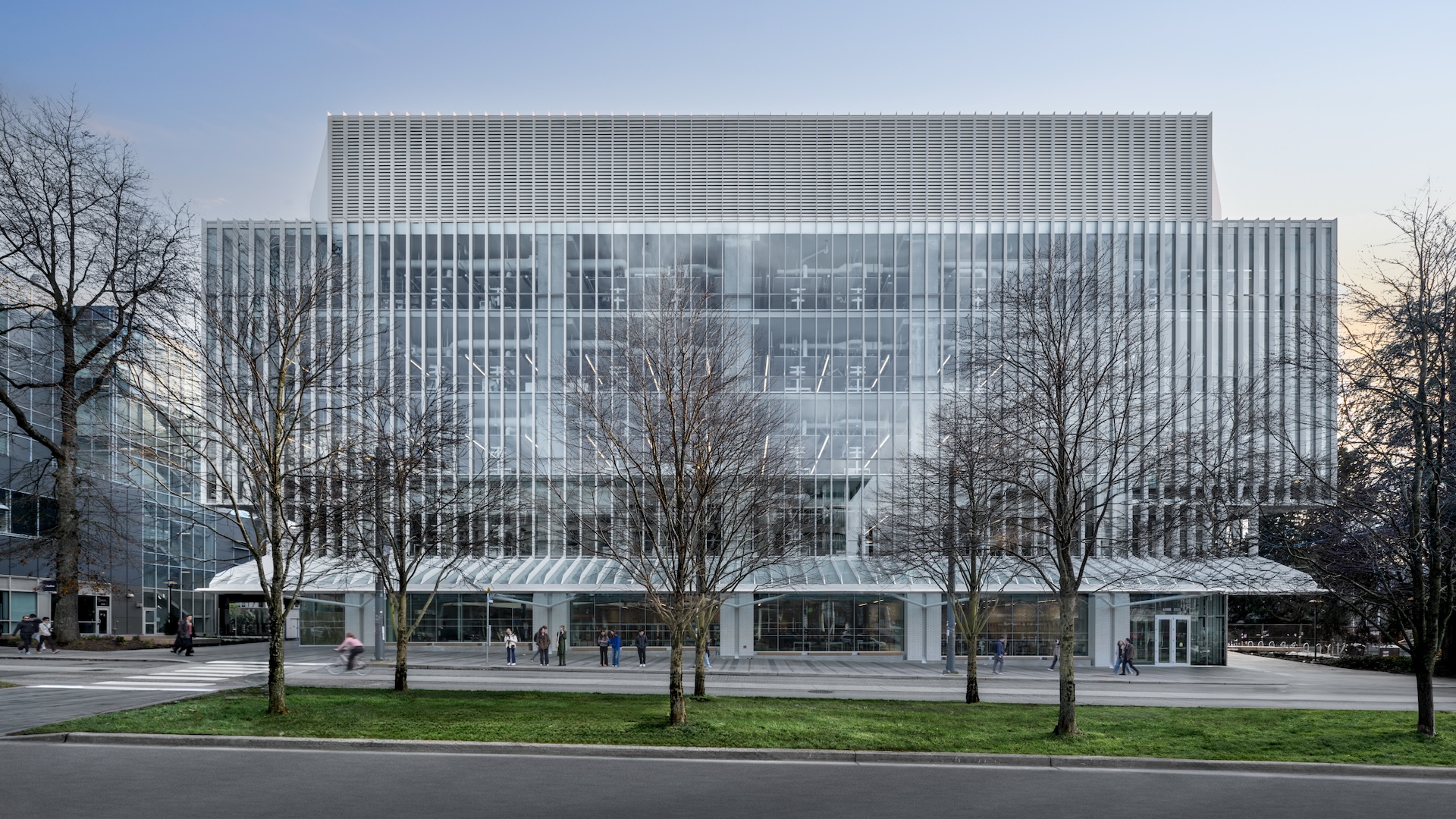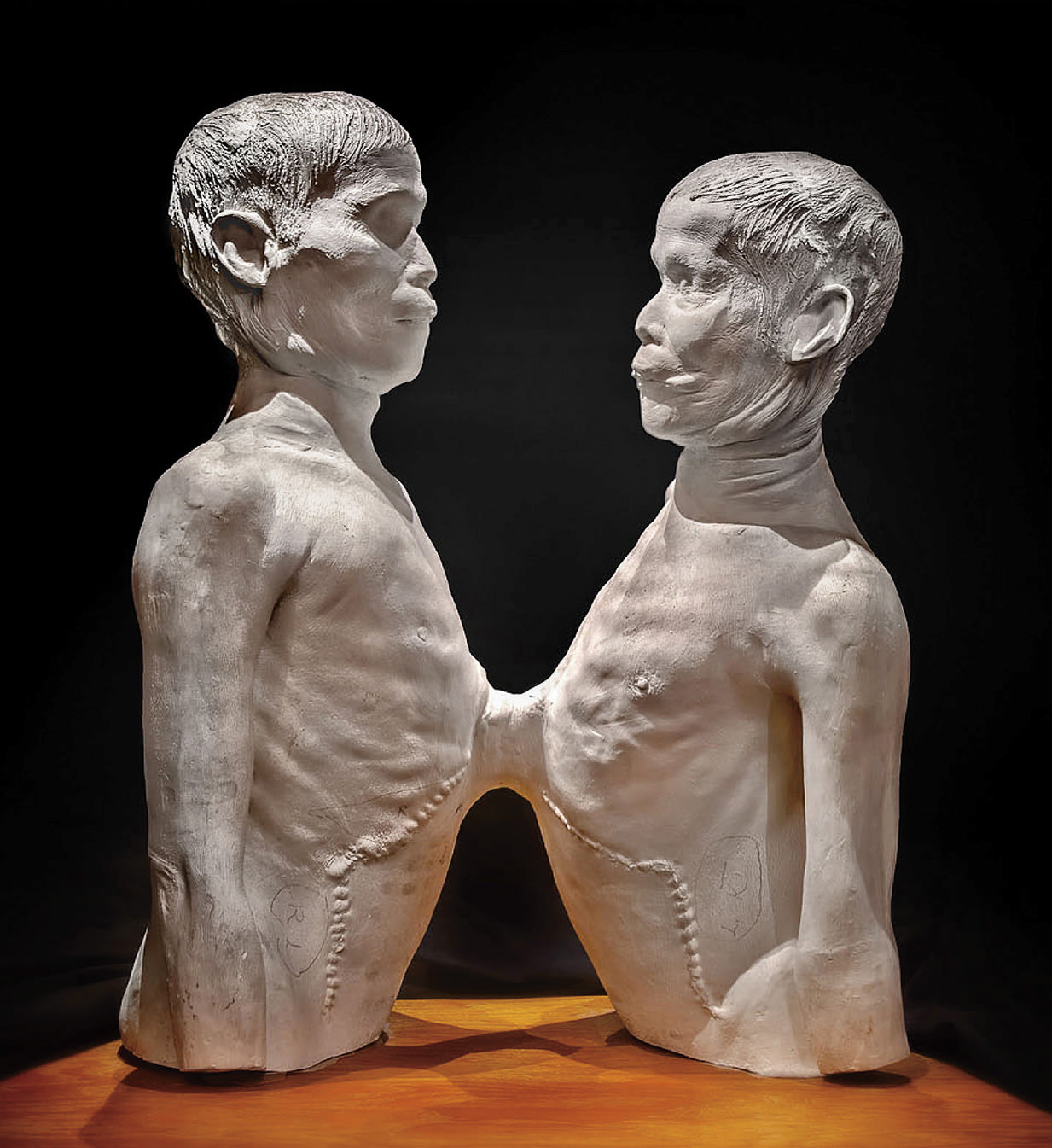UBC’s New Building for Biomedical Engineering May Spark an Entirely New Industry
Engineering excellence.

Photo by Philip Chin
Much has been written about how big ideas happen; much less about where. But it matters: by congregating innovators, researchers, and entrepreneurs in a centralized location—Bangalore, Shenzhen, and of course, Silicon Valley—ideas blossom, innovations multiply, and what if? thinking becomes part of the culture.
That’s the idea behind the new Gordon B. Shrum Building, which houses the School of Biomedical Engineering at the University of British Columbia. Existing at the intersection of medicine and technology (and hopefully, venture capital), the brand-new $139.4-million facility is the first purpose-built bioengineering hub in Canada and aims to become a leader in diagnostic research, real-world treatments, and made-in-Canada medical tech that will help us rebuild our bodies and reshape our lives.

Photo by Philip Chin
The facility will focus on practical tools, devices, and discoveries across three broad themes: cellular and molecular engineering (modifying existing cells and genes to advance new therapies and treatments); computational biology (harnessing AI-assisted modelling to improve disease detection and diagnosis); and human interface devices (sensors, therapeutic delivery systems, and nano-machines that act as bridges between data and doctor). You don’t need a PhD to see the attraction of such innovations: unlike purely theoretical research or hit-or-miss pharmaceutical trials, medical tech promises to make immediate, practical, measurable impacts on patient lives, along with a relatively visible pathway to monetization—an important consideration for attracting donors, industry partners, and angel investors alike.
The facility is perhaps the most tangible example of a recent wave of health-care innovation in Canadian universities and life sciences organizations. The University of Calgary’s discovery of a new reliable biomarker for breast cancer has led to a flurry of investment, most notably from the U.S. Department of Defense. Western University in Ontario started the Frugal Biomedical Innovations Program, focusing on creating medical technologies for underserved communities in Canada’s north, in Africa, and in other developing regions. And students at the University of Waterloo recently took home the grand prize in the Velocity FemTech Innovation Challenge for PeriGuard, a simple device that promises to decrease the risk of perineal tearing during labour while reducing the discomfort and trauma of childbirth.

The Gordon B. Shrum Building at UBC.
Good news, all of it, and coming at a very good time. For if the turmoil of the past several months has taught Canada anything, it is that being hewers of wood and drawers of water comes at a heavy price, leaving us vulnerable to wild mood swings in both the economy and the halls of power. The time has come for the Great White North to build something great and new: a cutting-edge industry that combines top-notch engineering know-how with decidedly practical ideas. Just the thing to heal our people, our economy, and maybe our national pride.




